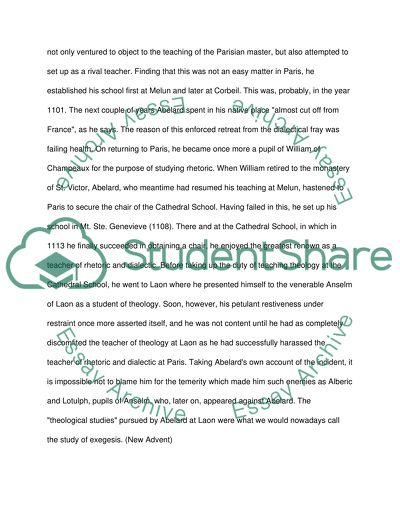Cite this document
(“Abelard and Finding the True Career Essay Example | Topics and Well Written Essays - 1250 words”, n.d.)
Retrieved from https://studentshare.org/miscellaneous/1512257-abelard-and-finding-the-true-career-this-paper-encompasses-a-discussion-of-abelard-and-finding-the-true-career
Retrieved from https://studentshare.org/miscellaneous/1512257-abelard-and-finding-the-true-career-this-paper-encompasses-a-discussion-of-abelard-and-finding-the-true-career
(Abelard and Finding the True Career Essay Example | Topics and Well Written Essays - 1250 Words)
https://studentshare.org/miscellaneous/1512257-abelard-and-finding-the-true-career-this-paper-encompasses-a-discussion-of-abelard-and-finding-the-true-career.
https://studentshare.org/miscellaneous/1512257-abelard-and-finding-the-true-career-this-paper-encompasses-a-discussion-of-abelard-and-finding-the-true-career.
“Abelard and Finding the True Career Essay Example | Topics and Well Written Essays - 1250 Words”, n.d. https://studentshare.org/miscellaneous/1512257-abelard-and-finding-the-true-career-this-paper-encompasses-a-discussion-of-abelard-and-finding-the-true-career.


